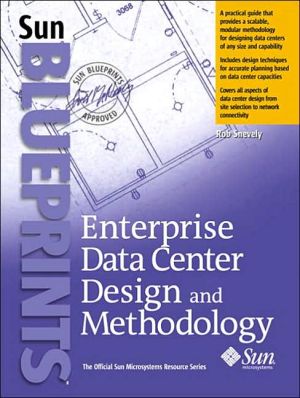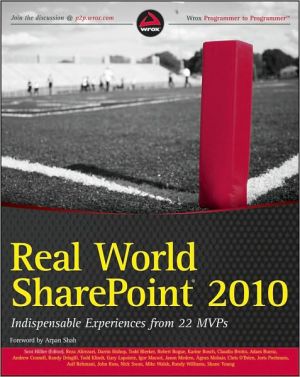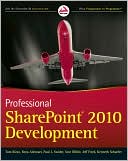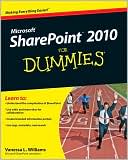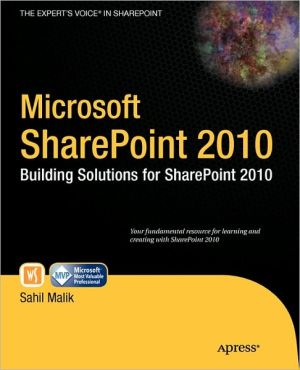Enterprise Data Center Design and Methodology
A practical guide that provides a scalable, modular methodology for designing data centers of any size and capability\ Includes design techniques for accurate planning based on data center capacities\ Covers all aspects of data center design from site selection to network connectivity\ \ Enterprise Data Center Design and Methodology is a practical guide to designing a data center from inception through construction. The fundamental design principles take a simple, flexible, and modular...
Search in google:
Enterprise Data Center Design and Methodology is the practical, start-to-finish guide to data center design and retrofitting. It introduces a scalable, modular methodology for designing data centers of any size and capability, and breakthrough techniques for accurate capacity planning. Sun Enterprise Architect Rob Snevely offers realistic solutions for every facet of planning and implementation, including site selection, network connectivity and infrastructure, environmental considerations, building codes, construction, and hazard avoidance. Booknews Employing an approach that contradicts the conventional method of using square footage to determine basic capacities like power and cooling requirements, this guide shows how to design a data center from inception through construction, using a flexible and modular approach based on real-world requirements and capacities. The book provides design advice and information on topics including sizing, site selection, data center environmental considerations, network infrastructures, and hazard avoidance. Snevely is responsible for data center architecture at a major firm. Annotation c. Book News, Inc., Portland, OR
Preface\ "Omne ignotum pro magnifico."\ —Tacitus\ Designing a data center, whether a new facility or retrofitting an existing one, is no easy, simple task. If you don't interact with people well, if you can't communicate effectively with people who are not in your area of expertise, if you don't enjoy solving difficult problems, if you want a simple, stress-free work life, don't design a data center!!!\ Okay, now that all the loafing cowards have stopped reading, we can start talking about what this book hopes to accomplish.\ This book attempts to walk you through the design process and offers a method that can be used to create a design that meets the requirements of your data center. This book is not a book of designs. It is a tool to work through your requirements and find solutions to create the best design for those requirements.\ Early in my career as a system administrator, someone said to me, "Data centers are black magic. They are not understandable or discernible by mere mortals." I can't print my response to that person, but that brief confrontational conversation stuck in my brain. I can tell you, designing data centers isn't "black magic." A data center is a complex and interdependent environment, however, it can be broken down into smaller, more manageable pieces. Methodologies can be used that make designing data centers understandable and discernible by mere mortals. To that person many years ago who tried to tell me otherwise, I have this to say: "You were wrong, and this book proves it!"\ Over the years, I've worked in a number of different data centers, and in that time I've had the opportunity to talk to many of Sun's customers about their centers and take tours through them. What I repeatedly found, with very few exceptions, was that there was no overall design methodology used when planning these centers. If there was a methodology, it usually came out of overcoming one or two problems that had bitten these people in previous data centers. Sometimes the problem areas were so over-designed that it forced other design areas to suffer.\ Often, the people who designed the space had never worked in data center environments. They typically designed commercial spaces like offices and warehouses and they used one basic method or formula for the design criteria: watts per square foot. This method assumes that the equipment load across the entire space is uniform. In every data center I have seen, the equipment load has never been uniform. Add to this that all of the pieces that make up a data center (power, cooling, floor load, connectivity, etc.) are all interrelated and dependent on each other. It became very clear that this old method of watts per square foot was not an effective or efficient design method. A better method that could address these issues was needed.\ When I started trying to create this new design methodology, I looked to other sources of design for information and inspiration, what Shakespeare would have probably referred to as muses. These run the gamut from classical antiquity to modern pop culture, and from artists and philosophers to fashion designers and punk rock musicians. At the beginning of every chapter in this book is a quote from one of these many muses. I hope that they can help provide you with similar inspiration, or better still, help you find your own muses.\ So, just what does "Omne ignotum, pro magnifico" mean? It translates as "Everything unknown is taken for magnificent." It means "Everything is commonplace by explanation." With information, reason, inspiration, and hard work, many things, including designing a data center, are understandable and doable.\ So let's get started! Or, to borrow a phrase from my Southern California Skateboarder's Lexicon, "Let's get radical!"\ Sun BluePrints Program\ The mission of the Sun BluePrints Program is to empower Sun's customers with the technical knowledge required to implement reliable, extensible, and secure information systems within the datacenter using Sun products. This program provides a framework to identify, develop, and distribute best practices information that applies across the Sun product lines. Experts in technical subjects in various areas contribute to the program and focus on the scope and usefulness of the information.\ The Sun BluePrints Program includes books, guides, and online articles. Through these vehicles, Sun can provide guidance, installation and implementation experiences, real-life scenarios, and late-breaking technical information.\ The monthly electronic magazine, Sun BluePrints OnLine, is located on the Web at http://www.sun.com/blueprints. To be notified about updates to the Sun BluePrints Program, please register yourself on this site.\ Who Should Use This Book\ This book is primarily intended for readers with varying degrees of experience or knowledge of data center technology. It is written for System and Network Administrators, MIS/IT managers, Operations staff, and Information Technology executives who would like a complete overview of the data center design process.\ Before You Read This Book\ You should be familiar with the basic administration and maintenance functions of a data center.\ How This Book Is Organized\ This book contains the following chapters and appendixes.\ Chapter 1, "Data Center Design Philosophy," presents the author's philosophy of designing a data center sanely and efficiently, including the top ten guidelines.\ Chapter 2, "Data Center Design Criteria," discusses the primary criteria of data center design including project scope, budget, availability profiles, insurance, building code, and determining the viability of the project.\ Chapter 3, "Designing a Data Center," discusses the basic design process, the key players, the method of designing for data center capacities, determining the structural layout and support systems, networking, redundancy, security, monitoring, and system health.\ Chapter 4, "Determining Data Center Capacities," could be considered the heart of the book. It describes the use of rack location units (RLUs) to determine the best design for the data center. It bases the design on the data center and equipment capacities rather than on electrical needs and square footage. It will take you through the planning stages and explain how to create RLU definitions in the early design stages.\ Chapter 5, "Site Selection," examines locating the data center in either an existing location or a build-to-suit situation. It takes an in-depth look at budget, access, security, capacity, environmental restrictions, and numerous other details to consider in selecting the best location.\ Chapter 6, "Implementing a Raised Floor," describes the several purposes of a raised floor system, the benefits of using this system over other systems, and goes into important structural details such as the support grid, tile construction, and load capabilities. It also covers the use of the subfloor space for air flow and cable routing.\ Chapter 7, "Power Distribution," examines all aspects of the data center's power requirements and support systems. It covers assessing power needs, safety, redundancy, backup power systems, grounding and bonding, the signal reference grid, wiring and cabling, power quality, avoiding electromagnetic and electrostatic problems, and the optional use of power distribution units.\ Chapter 8, "HVAC and Other Environmental Controls," takes you through the entire data center air flow and cooling system from HVAC units to the external support systems. It discusses the problems inherent in cooling a data center and how to remedy them. Other aspects are described, such as humidification, temperature and RH monitoring, mechanical support systems, proper air flow, exchange, pressure, and quality, and efficient placement of equipment.\ Chapter 9, "Network Cabling Infrastructure," describes various devices and cabling scenarios for the data center network. It discusses the structure of the network, network hierarchy and modular design, connectivity between equipment and to the ISP, proper routing, cable identification, and verification.\ Chapter 10, "Shipping, Receiving, and Staging," describes important but often overlooked aspects of the data center that should be considered in the initial design phases. Heavy equipment must be moved in and out of the center and it must go through packing, unpacking, and setup procedures. This chapter covers aspects of the loading dock, staging area, and storage areas.\ Chapter 11, "Avoiding Hazards," discusses the gamut of natural and man-made hazards including fire, earthquake, flooding, and noise. It also discusses human safety and avoiding unauthorized access.\ Chapter 12, "Environmental Contaminants," describes many of the contaminants that can cause operator health problems and compromise the operations of data center equipment. The different types of contaminants are discussed, how they can adversely affect operations, and how to avoid them. Solutions include positive pressurization and quality filtration.\ Chapter 13, "Codes and Construction," discusses the convoluted topic of codes and their many incarnations, and gives some basic construction criteria.\ Appendix A, "Managing System Configurations," A reprint of the October 2001 SuperG paper by Elizabeth Purcell. This paper examines the challanges of accurate system configuration managment including configuration management for software revisions, network interfaces, storage subsystems, firmware, and patches.\ Appendix B, "Bibliography and References," lists books, other technical documentation, organizations, and software.\ The Glossary is a list of terms and acronyms used frequently in the course of discussing data centers.\ Ordering Sun Documents\ The SunDocs program provides more than 250 manuals from Sun Microsystems, Inc. If you live in the United States, Canada, Europe, or Japan, you can purchase documentation sets or individual manuals through this program.\ Accessing Sun Documentation OnlineThe docs.sun.com Web site enables you to access Sun technical documentation online. You can browse the docs.sun.com archive or search for a specific book title or subject. The URL is http://docs.sun.com/
AcknowledgmentsPreface1Data Center Design Philosophy12Data Center Design Criteria73Designing a Data Center174Determining Data Center Capacities335Site Selection516Implementing a Raised Floor637Power Distribution778HVAC and Other Environmental Controls999Network Cabling Infrastructure12310Shipping, Receiving, and Staging13311Avoiding Hazards13912Environmental Contaminants14913Codes and Construction163AManaging System Configurations171B: Bibliography and References181Glossary187Index189
\ Employing an approach that contradicts the conventional method of using square footage to determine basic capacities like power and cooling requirements, this guide shows how to design a data center from inception through construction, using a flexible and modular approach based on real-world requirements and capacities. The book provides design advice and information on topics including sizing, site selection, data center environmental considerations, network infrastructures, and hazard avoidance. Snevely is responsible for data center architecture at a major firm. Annotation c. Book News, Inc., Portland, OR\ \
